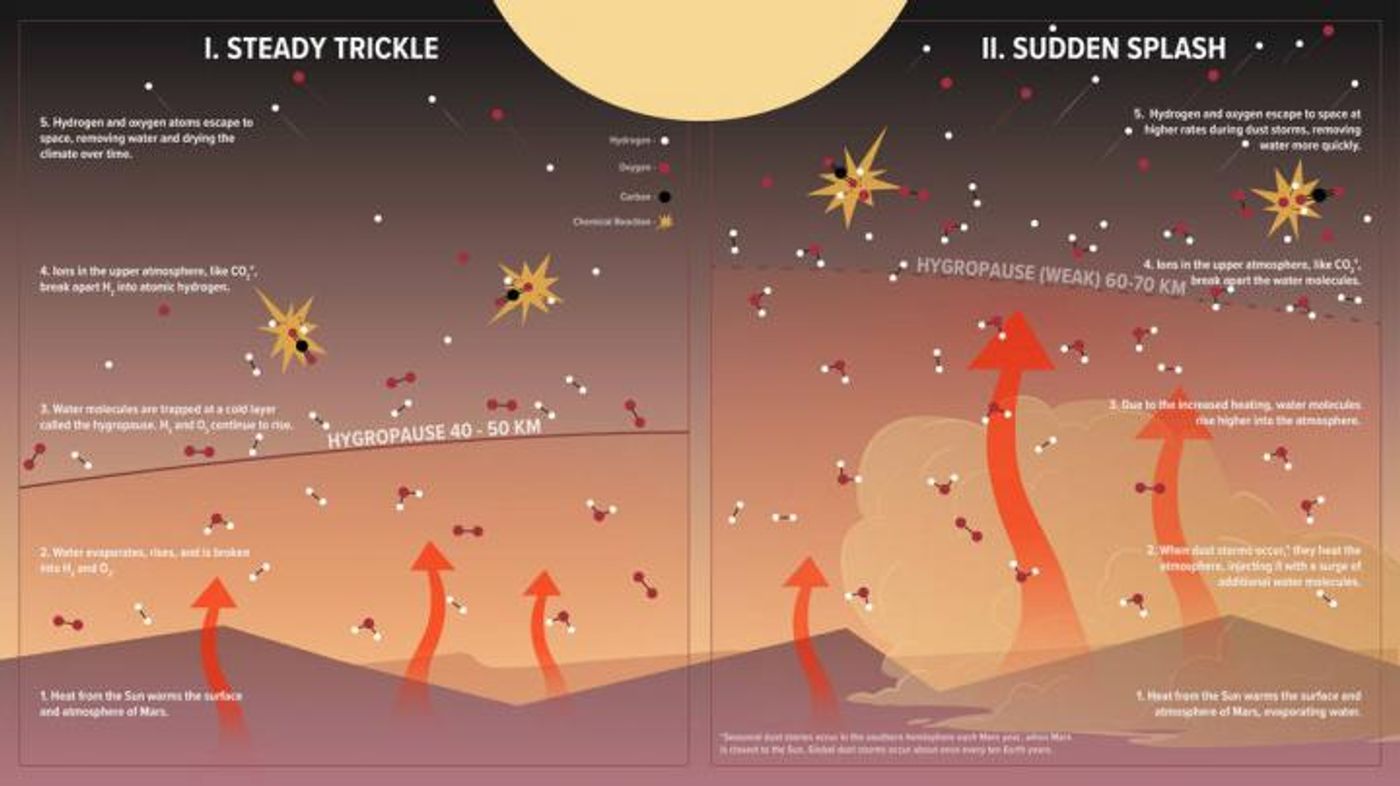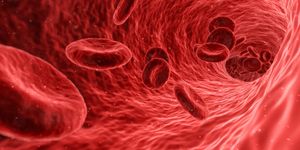Martian Water Vapor Gets Swept Into Space
Mars was once a planet with oceans of water. So what happened to all of it? Researchers used a tool called MAVEN (Mars Atmosphere and Volatile EvolutioN) to learn more. The NASA instrument revealed that when water vapor forms near the Martian surface, it gets sent high up into the atmosphere, where it reaches charged particles called ions that destroy it, and the remnants are lost to space. The findings have been reported in Science.
This phenomenon is one of several that have led to the loss of an ocean full of water from Mars over the course of billions of years. Mars even continues to lose what little water it still has in this way, as water vapor sublimates from the polar ice caps during the planet’s warmer periods, noted the researchers.
"We were all surprised to find water so high in the atmosphere," said Shane W. Stone, a doctoral student in planetary science at the University of Arizona's Lunar and Planetary Laboratory. "The measurements we used could have only come from MAVEN as it soars through the atmosphere of Mars, high above the planet's surface."
In this work, the researchers used data collected by a mass spectrometer on MAVEN, which enabled them to separate and identify different ions from the Martian atmosphere. The team observed as water ions were lost from a site that is closest to the sun during the Martian summer, about 93 miles above the surface of Mars over a two year period.
The warm temperatures and high winds that also occur at this time and place encourage the water vapor to get swept into the atmosphere. Ions there break the water molecules down into oxygen and hydrogen, which can then escape the atmosphere and go into space.
It was once thought that water vapor on Mars behaved as it does on Earth and stays close to the surface.
"Everything that makes it up to the higher part of the atmosphere is destroyed, on Mars or on Earth," Stone said, "because this is the part of the atmosphere that is exposed to the full force of the Sun."
In June 2018, there was a strong dust storm on Mars that is thought to have caused the loss of as much water in 45 days as would’ve normally been lost over a year.
"We have shown that dust storms interrupt the water cycle on Mars and push water molecules higher in the atmosphere, where chemical reactions can release their hydrogen atoms, which are then lost to space," said Paul Mahaffy, director of the Solar System Exploration Division at NASA Goddard and principal investigator of MAVEN's Neutral Gas and Ion Mass Spectrometer (NGIMS).
While previous work has shown that dust storms on Mars push water vapor high into the atmosphere, researchers did not know it would reach the top, where water molecules can be broken down ten times faster than they are at lower heights.
"What's unique about this discovery is that it provides us with a new pathway that we didn't think existed for water to escape the Martian environment," said Mehdi Benna, a Goddard planetary scientist and co-investigator of MAVEN's NGIMS instrument. "It will fundamentally change our estimates of how fast water is escaping today and how fast it escaped in the past."
Sources: AAAS/Eurekalert! via NASA Goddard Institute, Science










